The lawnmower mushroom (Panaeolus foenisecii) is a common and widespread little brown mushroom (LBM) often found on lawns and grassy areas. It is one of the most widespread fungi in North America and is known to appear in large numbers, often seemingly overnight.
Invariably, people get very concerned when they see this mushroom pop up on their lawns used by children and pets. We’re happy to say it is not a cause of concern, but it’s good to know about its identification, habitat, potentially dangerous lookalikes, and why it appears on your lawn in the first place. In this guide, we will cover all these aspects to help you better understand this ubiquitous lawn mushroom.
- Scientific name: Panaeolus foenisecii
- Common names: Lawnmower mushroom, haymaker, brown hay mushroom
- Habitat: Lawns, meadows, grassy areas
- Edibility: Inedible, potential toxicity
- Psychoactive properties: None

Jump to:
Lawnmower Mushroom Identification
Season
It can be found from late spring to fall or over winter in warmer climates. The lawnmower mushroom has a wide fruiting range and is not super picky.
Habitat
The lawnmower mushroom is saprobic, meaning it feeds on dead or decaying organic matter. It grows alone or in groups on lawns, meadows, and other grassy areas. It regularly appears in large dense or scattered groupings across the lawn.
It does not grow on trees, though it may feed on decaying wood like wood chip mulch. Often, it gathers nutrients from dead and decaying wood far beneath the soil. This mushroom is widely distributed across North America but is less common in the southeastern states.
Lawnmower mushrooms commonly fruit with other lawn mushroom species, so don’t be surprised to see them with other various fungi. Common companions include Agaricus species, like the meadow and horse mushrooms, and the fairy ring mushroom.

Identification
Cap
The cap of the lawnmower mushroom is usually 1/4-1 1/2 inch in diameter – it’s a small mushroom with a thin stem and a small round cap. It has a widely conical or bell-shaped structure, eventually becoming convex or nearly flat. It is bald and hygrophanous, meaning its color changes dramatically as it loses moisture. This translates to caps with various shades of brown or whitish coloring, as parts of the mushroom are drier than others.
The lawnmower mushroom’s cap is initially dark brown, changing to pale grayish-brown, tan, or buff, often with bands of these shades when drying out. The cap edge may become finely lined and often splits with age.
Gills
The gills of the lawnmower mushroom are narrowly attached to the stem and can be close or a little distant. They are grayish to brownish at first, becoming darker brown as the mushroom matures. The gills may have a mottled appearance and sometimes have pale edges.
Stem
The stem is typically 2.5-4 inches long. It is tall, skinny, and more or less equal or tapers slightly toward the base. When fresh and young, the stem often has finely ridged vertical lines of a whitish fluffy or flaky fiber, but it soon becomes bald. The stem is white when young, eventually turning whitish toward the top and brownish to brown below. It is fragile and hollow.
Flesh, Scent, and Taste
The flesh is thin and brownish and doesn’t change color when sliced. This mushroom does not have a strong smell, though some report a nutty mushroomy smell that borders on displeasing. The same goes for the taste – unnoticeable, slightly nutty, or unpleasant.
Spore Print
Dark brown to purplish brown or close to black.
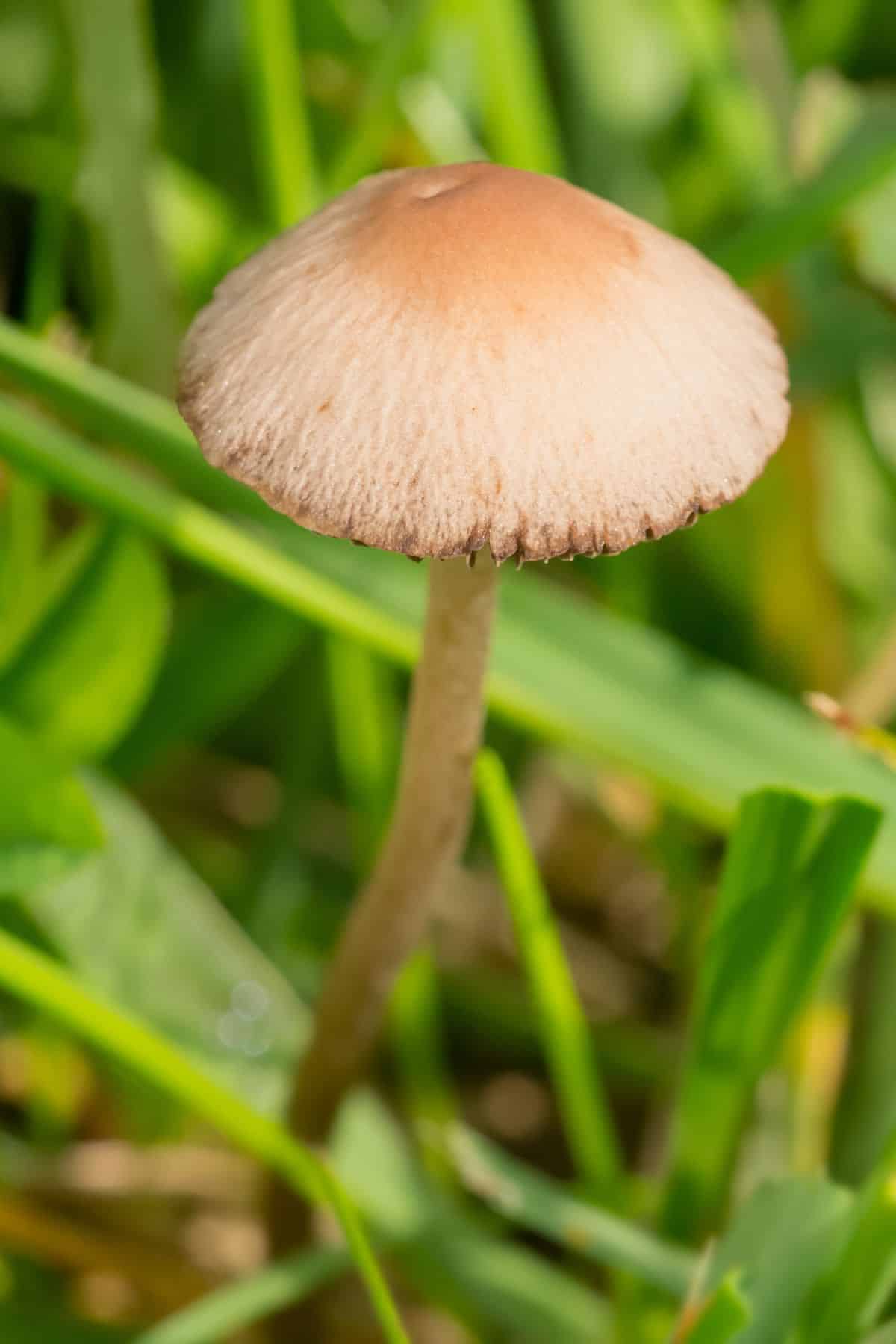

Are Lawnmower Mushrooms Harmful to Pets or People?
Pets
Lawnmower mushrooms are not known to be toxic to pets. If they were problematic, we’d surely know by now since the mushroom is so widespread and pets have broad access to them. However, since they are inedible to humans, it is better to keep pets away from them as a precautionary measure. Always supervise your pets while they are outdoors and teach them not to eat anything they encounter.
People
The lawnmower mushroom gets a lot of blame for hallucinations and disorientation after eating. However, it is unlikely this is the mushroom causing the issues. Many other little brown mushrooms (LBMs) look similar and grow in similar regions.
Lawnmower mushrooms are inedible, though, and there is evidence that children can become ill after ingesting these mushrooms – gastrointestinal illness, not deadly toxic outcomes. It is best to treat them as toxic and avoid consuming them, but don’t get too freaked out if they get eaten. A European study demonstrated that a child would not get significantly ill if they’ve eaten fewer than five lawnmower mushrooms.
While some research shows small amounts of psilocybin in these fungi, the concentration is too low to cause hallucinogenic effects.

How Do I Get Rid Of Lawn Mower Mushrooms?
Lawnmower mushrooms are not harmful to lawns. They help break down organic matter and recycle nutrients back into the soil – this is a good thing! The presence of these mushrooms means you have a lawn rich in nutrients and organic material.
However, a lot of people may not appreciate their appearance on their lawns and want to get rid of them. Eradicating lawnmower mushrooms from your lawn is nearly impossible, as they feed on the organic matter present in the grass. Instead of trying to remove them, consider embracing their natural role in the ecosystem of your lawn. It’ll save you a lot of headache!
If you’re super determined, you can try picking them, but really, that won’t help much. The mushroom’s “roots,” known as mycelium, stretch out underground, and to get rid of the mushroom, you’d have to dig up all the mycelium. Basically, you’d have to destroy your lawn to get rid of the mushrooms.

Lawnmower Mushroom Lookalikes
Several other mushrooms resemble the lawnmower mushroom, making correct identification crucial. Some common lookalikes include:
Banded Mottlegill (Panaeolus cinctulus)
This is a psychedelic mushrooms with the same habitat as lawnmower mushrooms. It can be differentiated by the jet-black spores and darker gill coloring. It also features a band of reddish brown coloring around the edge, which contrasts the lighter brown coloring of the cap. It is extremely similar to the lawnmower mushroom, though, and easily confused. The stem may or may not bruise blue. If it does, that’s a good way to discern it is not the lawnmower mushroom.
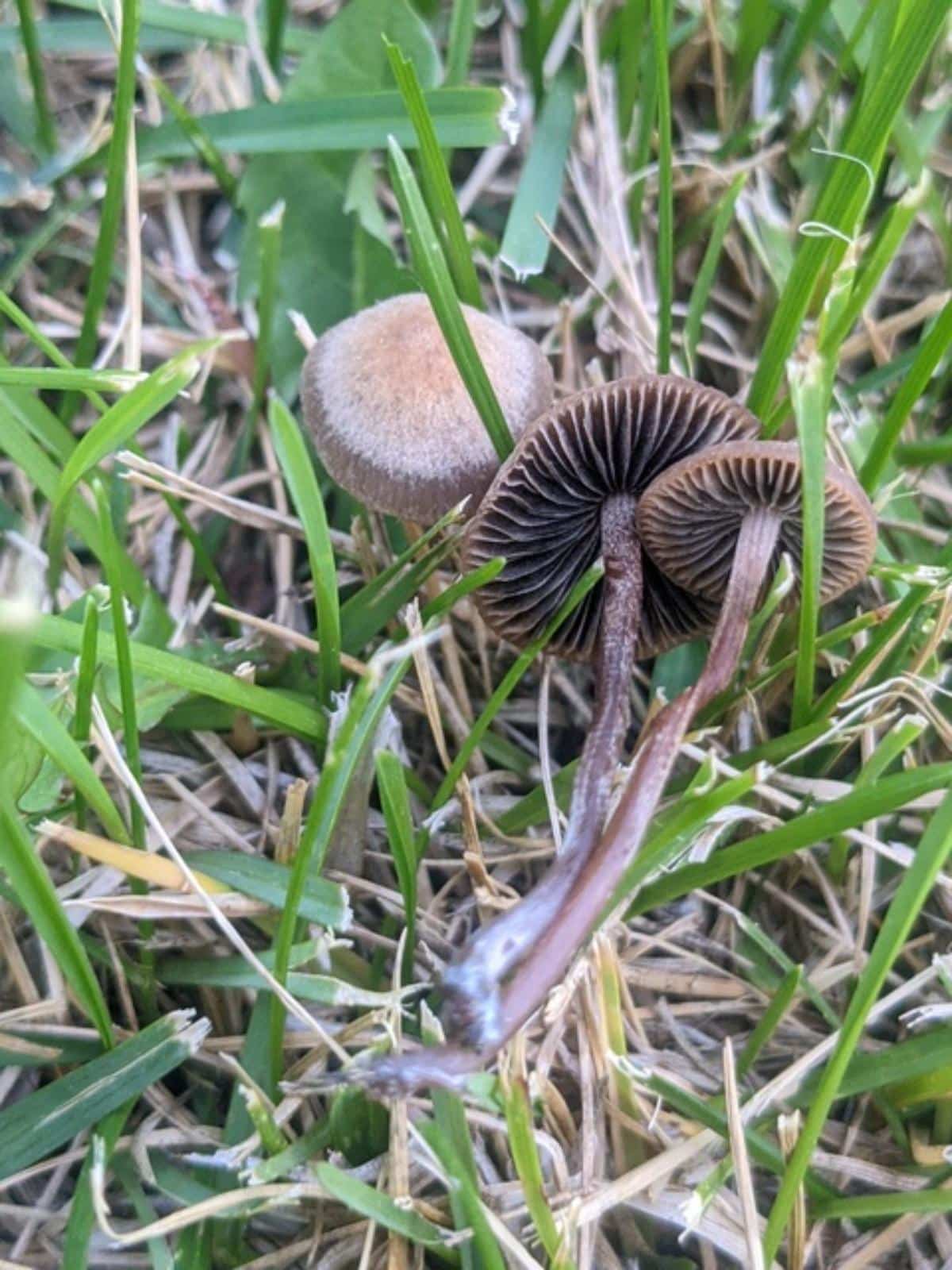
Meadow mushroom (Agaricus campestris)
The edible meadow mushroom has a whitish cap and lighter gills and is much bigger. The only real similarity is that it grows in meadows and lawns, so it shares a habitat with lawn mushrooms.
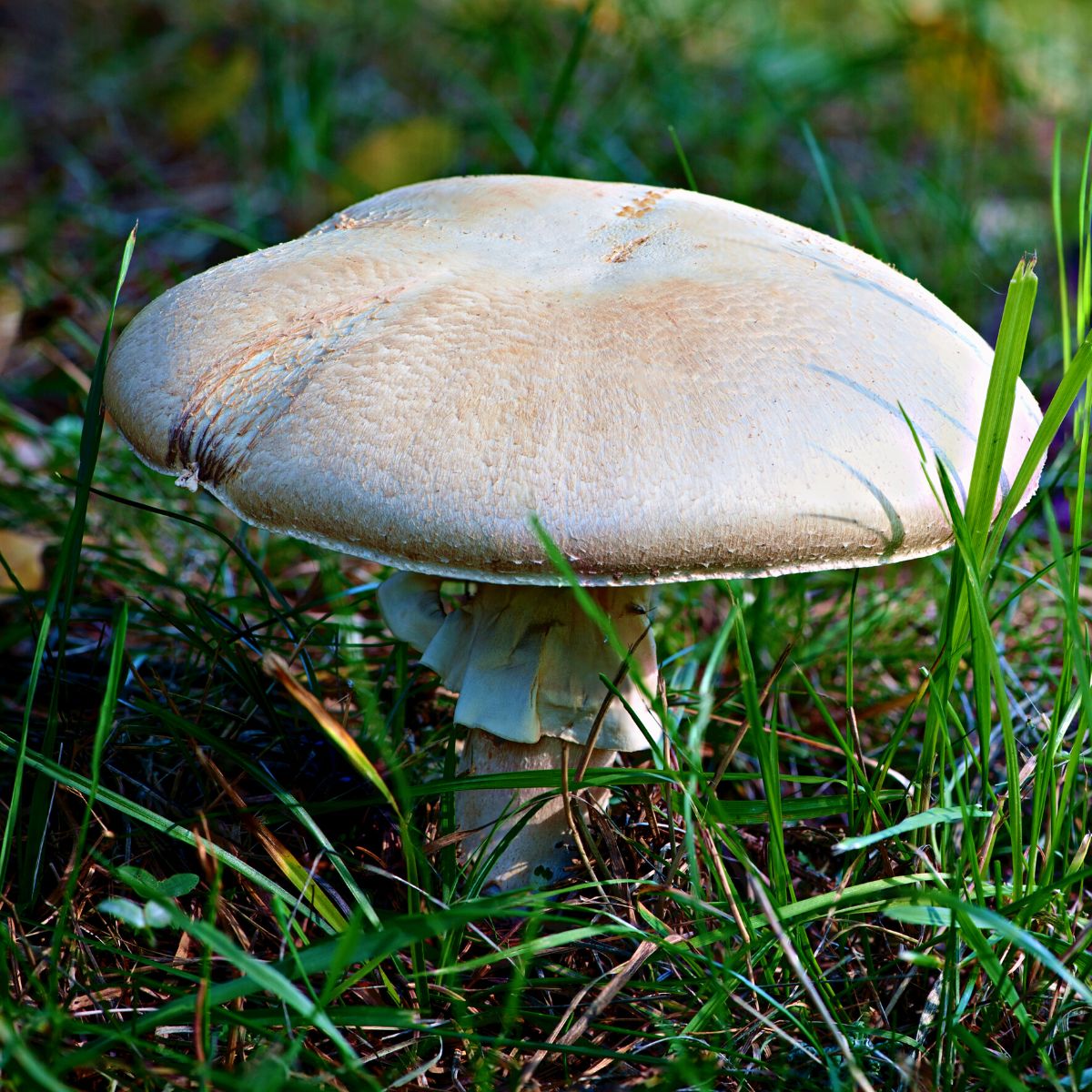
White Dunce Cap (Conocybe apala)
This is a small, fragile mushroom with a conical cap and a pale white to yellowish to light brown color. The white dunce cap is similar size to the lawn mushroom and also grows in meadows and yards, but it is much, much lighter in color. It is toxic but not deadly.
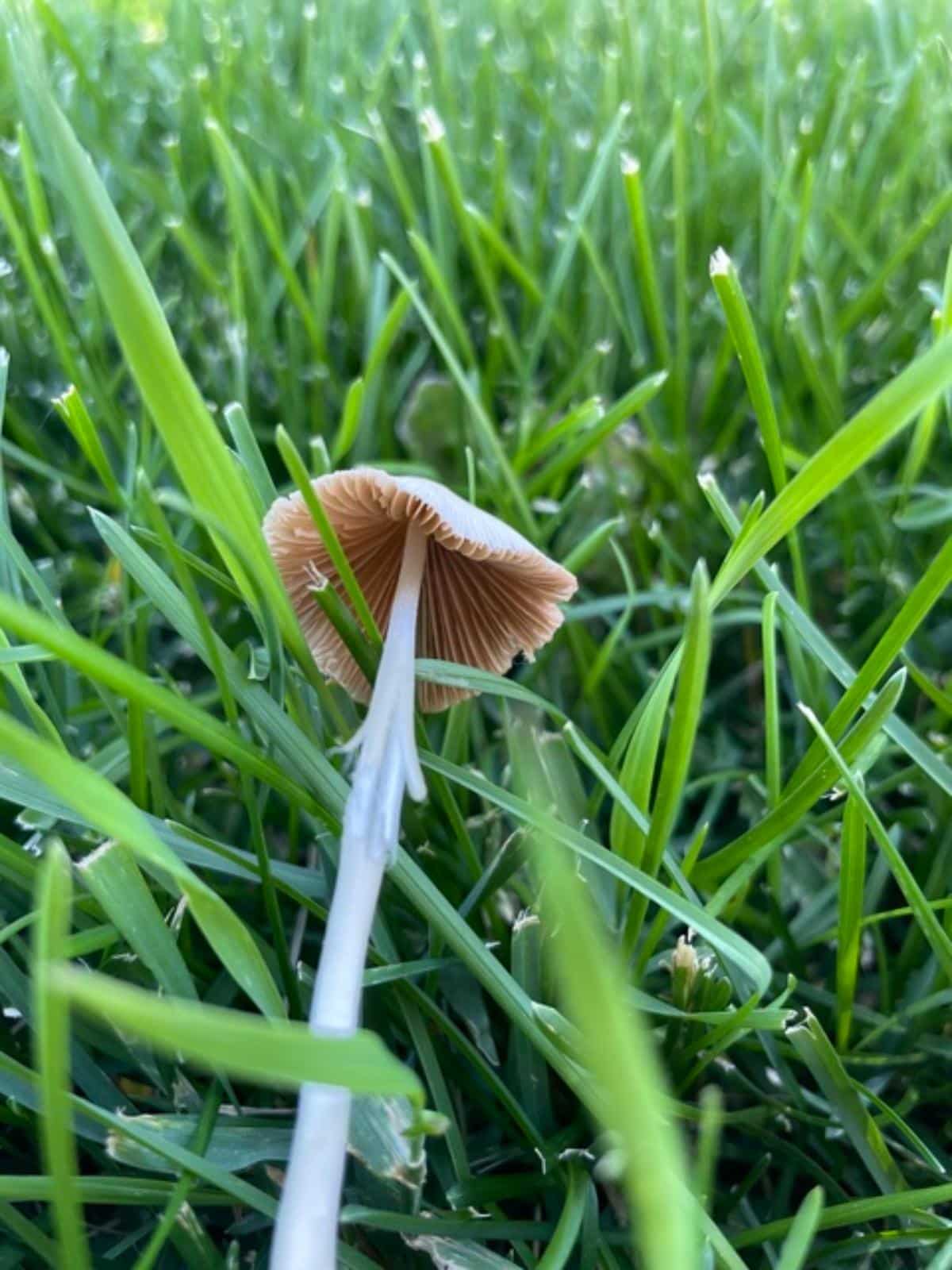
Fairy Ring Mushroom (Marasmius oreades)
Commonly known as the fairy ring mushroom, this mushroom has a buff to tan-colored cap and white gills. It is much lighter than the lawnmower mushroom with a very rounded top and thicker, white stem. It may get confused with the lawnmower mushroom because it grows in the same grassy habitat.
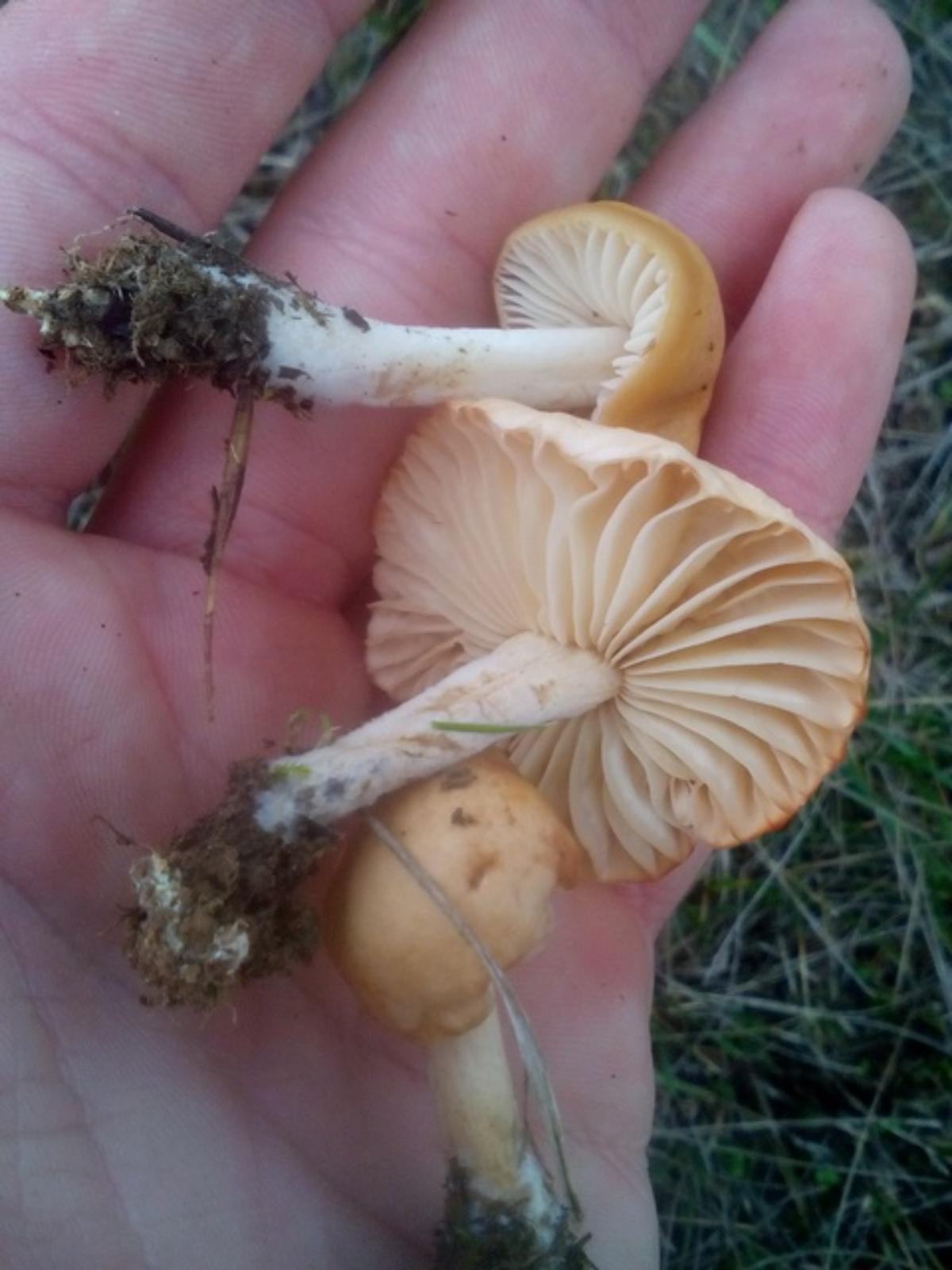
Candolleomyces candolleanus (formerly known as Psathyrella candolleana)
This mushroom is usually larger, lighter colored, and has veil remnants on the edge of the cap or stalk.
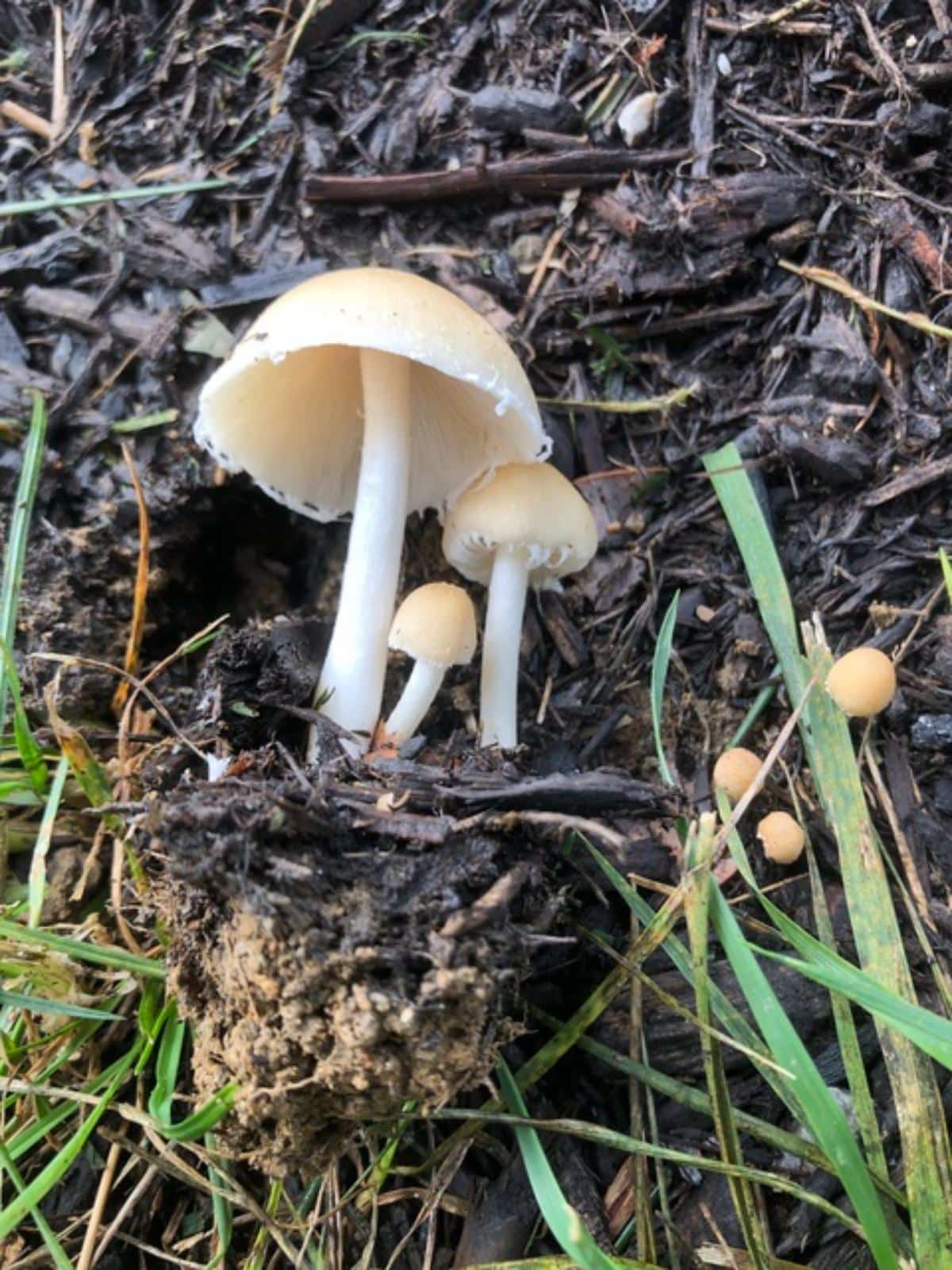
Dung Roundhead (Protostropharia semiglobata, aka Stropharia semiglobata)
This species is similar in color to the lawnmower mushroom and is also a small LBM (little brown mushroom). It has a transient ring, though, and leaves a brown spore print. The primary difference is this mushroom grows from dung, as is implied from the common name. Sometimes, the dung is buried so it looks like it is growing from the ground, which is where it gets confused with the lawnmower mushroom. It is lighter in color than the lawnmower mushroom, though, with both a lighter cap surface and whiter stem.

Turf Mottlegill (Panaeolus fimicola)
The turf mottlegill has a dark brown cap when wet and dries out to become mid brown. It looks extremely similar to the lawnmower mushroom, which isn’t surprising since its in the same genus. The primary difference is the cap color, which is grayish to blackish and sometimes yellowish. It is not brown, though, which sets it apart from the lawnmower mushroom. The flesh of this species is also gray and not brown like the lawnmower.

Curious About Other Lawn Mushrooms – Check out our Guide to 7 Common Lawn Mushrooms
Common Questions About Lawnmower Mushrooms
What happens when you eat lawnmowers mushroom, panaeolus foenisecii?
It may cause gastric upset which lasts for several hours.
Are all little brown mushrooms magic hallucinogenic?
The lawnmower mushroom is part of a group of hallucinogenic mushrooms (species of the genera Conocybe, Gymnopilus, Panaeolus, Pluteus, Psilocybe, and Stropharia), although it has little to no magic properties itself. Other members of the genus do contain psilocybin in varying amounts. If you’re looking for a magic experience, the lawnmower mushroom is not going to get you there.






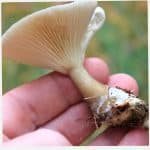



Anne Brickler says
Is their a way to test lawn mushrooms for toxicity?
Jenny says
There is no one way to test mushrooms of any kind for toxicity. You have to identify the individual species. This guide should help https://www.mushroom-appreciation.com/is-this-mushroom-poisonous.html